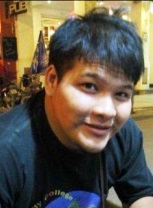Voices from the Sylff Community
Mar 16, 2016
Helping to Develop Young Leaders in Community Resource Management
Pradhana Chantaruphan, Olarn Ongla, Sasiwimon Worapan, Alongkorn Jitnuku
Four Sylff fellows from Chiang Mai University, Thailand—Pradhana Chantaruphan, Olarn Ongla, Saiwimon Worapan, and Alongkorn Jitnuku—jointly organized a field study to raise students’ awareness of environmental sustainability through community resource management. This coauthored article describes highlights of the field study and explains how collaboration among Sylff fellows helped to facilitate students’ learning.
* * *
On April 4-5, 2015, four Sylff fellows from Thailand organized an interactive activity in Pa Ngue village, Tanuer sub-district, Mae On district, Chiang Mai Province, Thailand.“Potential development for young leadership through participation in community resource management” was a joint project organized by Chiang Mai University and Silpakorn University. The idea of the project was to encourage students to become more aware of their potential as effective agents of change in society. Learning through real experiences helps students to understand their real potentiality.
Chiang Mai University collaborates with Silpakorn University in Bangkok to provide opportunities for students from both universities to work with villagers as a part of their efforts in community engagement. For students, community engagement serves as a real-world learning opportunity. Besides participating in activities related to their own areas of study, students must serve the needs of the community to help develop wider society and themselves as well. Becoming involved with the community in this way provides useful practice, training, and learning for students and encourages them to develop into active, responsible citizens.
After the university’s Sylff fellows group meeting in 2014, the four authors of this article felt strongly that there was a need for greater community engagement. It was this shared belief that made us decide to undertake a project together. Through our discussion of the strengths of our group, we thought of tapping into the community networks we have established through our various research and projects. We divided our work into several categories. Pradhana Chantaruphantook responsibility for coordination between the two universities as a faculty member of Silpakorn University, while the fieldwork sites were selected by Olarn Ongla based on his experience of research in this village.
Site Selection: An Important Step
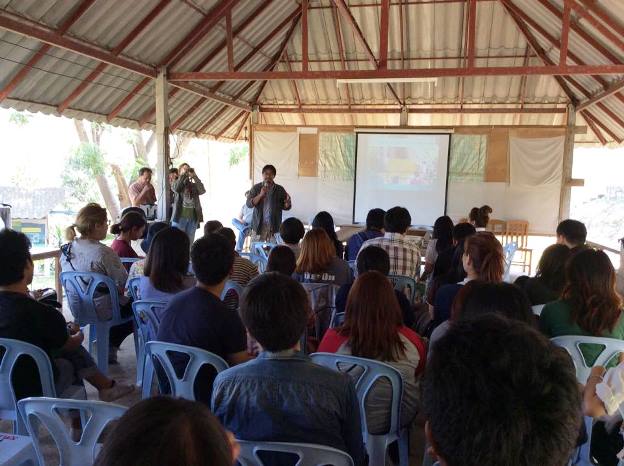 The story of Pa Ngue village illustrates how the process of forest management takes place in the community in response to external pressures that can include state policies and economic conditions. One thing that is peculiar to this village is the coexistence of different ethnic groups in the same area. These ethnic groups are the Karen and the so-called native or indigenous people. These consist of two groups: one group is a mixture of indigenous locals and Tai-lu from Mae-Sa-Puad village; the other is made up of indigenous people from the On-Klang sub-district. Together these ethnic groups search for ways to protect their local resources and develop strategies to deal with the state and bargain for autonomy. This is one of the things that make the village so attractive as a learning area for students. The students can see examples of conflict management among stakeholders and witness the development of ideas consistent with the historical and social circumstances. The Sylff fellows selected this area for the project based on these merits.
The story of Pa Ngue village illustrates how the process of forest management takes place in the community in response to external pressures that can include state policies and economic conditions. One thing that is peculiar to this village is the coexistence of different ethnic groups in the same area. These ethnic groups are the Karen and the so-called native or indigenous people. These consist of two groups: one group is a mixture of indigenous locals and Tai-lu from Mae-Sa-Puad village; the other is made up of indigenous people from the On-Klang sub-district. Together these ethnic groups search for ways to protect their local resources and develop strategies to deal with the state and bargain for autonomy. This is one of the things that make the village so attractive as a learning area for students. The students can see examples of conflict management among stakeholders and witness the development of ideas consistent with the historical and social circumstances. The Sylff fellows selected this area for the project based on these merits.
Project Design
Three activities over two days provided students with opportunities to work with villagers. On the first day, students and villagers cooperated with pupils from the local school to construct a check dam. On the second day, students surveyed the area where the community lives and shared with villagers in a discussion on resource management, leading to an exchange of ideas between villagers and students. This project was devoted to improving the environmental sustainability of the community and to promoting leadership among students at the same time.
Day 1: Check Dam Construction by Students, Villagers, and Local Pupils
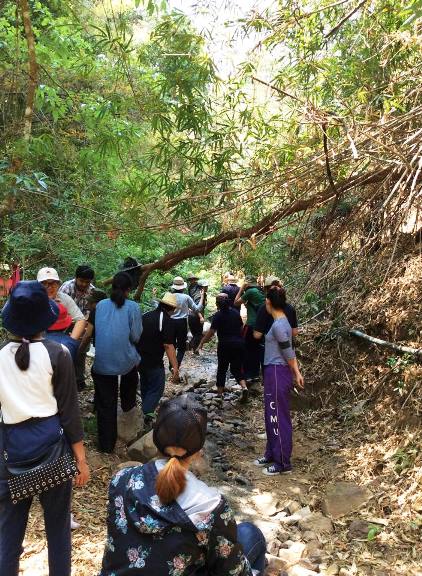
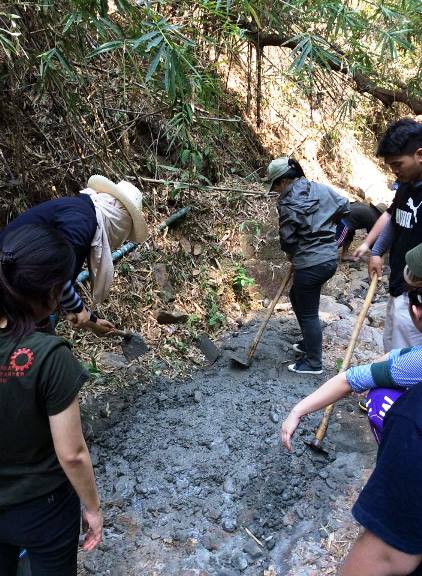 The schedule started with an introduction of participants and the community. Villagers told participants about their history and spoke about community development and the management of community resources. Later in the afternoon, students got to put their skills into practice in a real-world setting, working alongside villagers and local students on a resource management project by constructing the dam.
The schedule started with an introduction of participants and the community. Villagers told participants about their history and spoke about community development and the management of community resources. Later in the afternoon, students got to put their skills into practice in a real-world setting, working alongside villagers and local students on a resource management project by constructing the dam.
Check dams are made of a variety of materials. Because they are typically used as temporary structures, they are often made of cheap and readily accessible materials, such as rocks, gravel, logs, hay bales, and sandbags. Villagers usually cannot receive financial assistance from the government to construct check dams. They have to depend on their own resources, including manpower. Check dams are also limited in duration. These factors make students’ help relevant to the need of the villagers.
Check dams are a highly effective way of reducing flow velocities in channels and waterways. Compared to larger dams, check dams are faster to build and more cost-effective, being smaller in scope. This means that building a check dam will not typically displace people or communities. Nor will it destroy natural resources if proper care is taken in designing the dam. Moreover, the dams themselves are simple to construct and do not rely on advanced technologies. This means they can be easily used in more rural and less “developed” communities.
After dinner students shared their thoughts on the work of the community, their feelings on working alongside the villagers, and their ideas about young leadership.
Day 2 : Surveying the Community Area
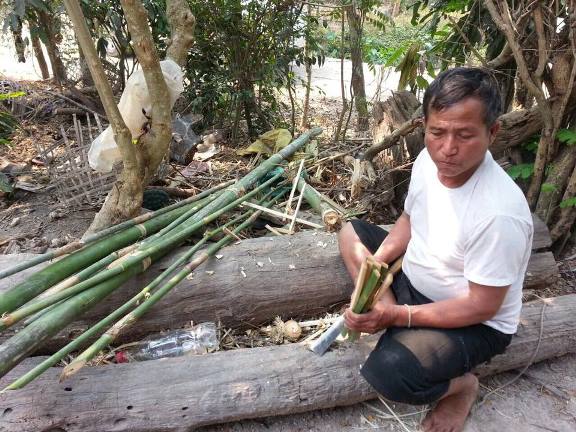
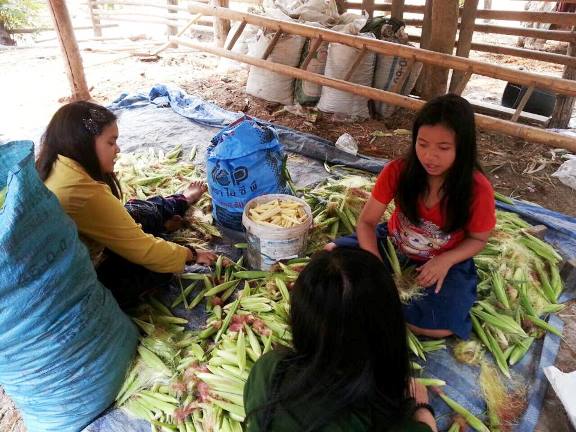 The first activities got underway early in the morning, with the students separated into two groups. The first group carried out a survey on villagers’ working lives. Most of the villagers are farmers, producing corn on contract for the Thai Royal Project. Farming on contract with the Thai Royal Project brings many benefits, including useful information, access to raw materials, and experts who can give farmers advice. The contracts also guarantee farmers an income, giving them security and stability. This binds the village economy tightly with local resources, and brought home to us how important it is for the villagers to be able to manage the areas they use and share resources among the community in a sustainable way.
The first activities got underway early in the morning, with the students separated into two groups. The first group carried out a survey on villagers’ working lives. Most of the villagers are farmers, producing corn on contract for the Thai Royal Project. Farming on contract with the Thai Royal Project brings many benefits, including useful information, access to raw materials, and experts who can give farmers advice. The contracts also guarantee farmers an income, giving them security and stability. This binds the village economy tightly with local resources, and brought home to us how important it is for the villagers to be able to manage the areas they use and share resources among the community in a sustainable way.
The second group conducted a survey on water management. The geography of the village is mountainous, and ensuring a steady supply of water is no easy task. Villagers have constructed a water supply system by themselves.
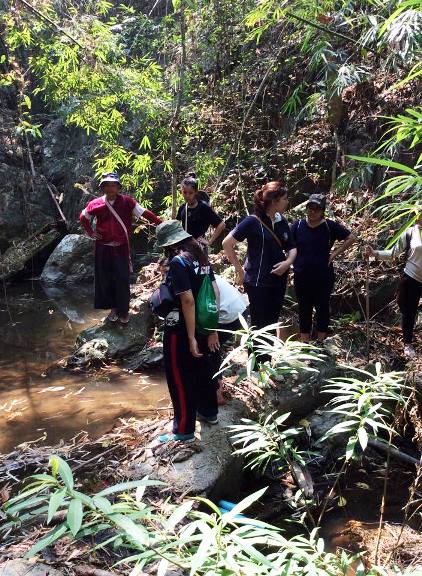
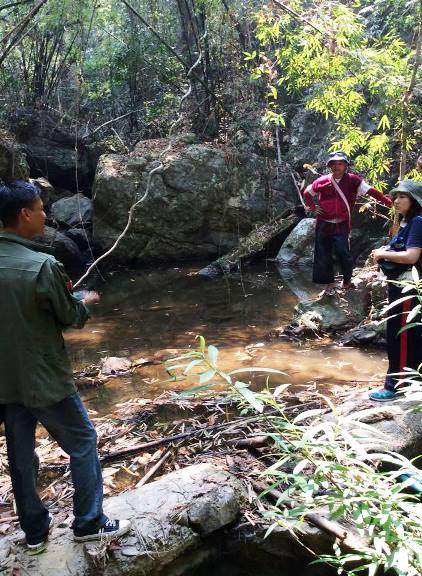 The group walked into the forest to survey the headwater. The villagers told legends about ancestor worship and the animist beliefs that the members of community act out in rituals that pay respect to the local spirits. Nature is therefore something that protects the villagers and their way of life. These traditional beliefs also help to encourage the community to use the water and other resources of the forest with respect. Animists beliefs make it less likely that people will take advantage of one other and help to instill a spirit of coexistence in the community.
The group walked into the forest to survey the headwater. The villagers told legends about ancestor worship and the animist beliefs that the members of community act out in rituals that pay respect to the local spirits. Nature is therefore something that protects the villagers and their way of life. These traditional beliefs also help to encourage the community to use the water and other resources of the forest with respect. Animists beliefs make it less likely that people will take advantage of one other and help to instill a spirit of coexistence in the community.
Group Discussions
After the students had explored the community, they compiled the data and knowledge they had gained from the course. They shared with friends in the group and passed on these findings to other friends in the separate group who carried out their surveys in a different area. At the same time they exchanged ideas with the villagers about activities in the area and doubts arising from their experiences in the field. In this way, the students were able to learn from one another, and this helped to evoke an atmosphere of enthusiasm. Through the course, participating students came to understand that community resources need to be appropriately managed and that activities of all kinds can act as a bridge to new knowledge, whether the activity involves learning from storytelling, taking part in the everyday activities of villagers, learning about resource management strategies, or taking part in discussions after the activities are over.
Significance and Impact of the Project
(1) Effects on the Community
The community will be strengthened in the management of resources already available. Participation in this activity helped to generate confidence and a sense of pride that will empower the community to put their tacit knowledge into use. The project also served as a reminder that the knowledge of the community has been handed down from generation to generation. Owing to the university’s support, helping communities in this way earns them greater bargaining power with the state. By strengthening academic networks, it also helps to give confidence to youth leadership in the village.
(2) Effects on Sylff Fellows
This project had a positive impact for the fellows from its very outset, involving as it did collaboration between fellows from three disciplines (anthropology, economics, and political science). The project served as a useful reminder of the importance of working with local communities in order to understand the social and cultural phenomena that led us to pursue these careers in the first place. In addition, a joint project of this nature reflects the interdisciplinary work and exchange of ideas between fellows with knowledge in three different fields, each with something to contribute to the project. Political science is relevant to the idea of resource management and the community’s bargaining power vis-à-vis the state, while anthropology covers concepts of culture and beliefs in collective consciousness and community benefit, and economics helps to understand the wealth accruing to the community through resource management. All of this has helped to expand fellows’ understanding and is an example of interdisciplinary work.
(3) Effects on Participating Students
Involving students from different universities and different fields, the project successfully enabled the exchange of knowledge between disciplines and interdisciplinary work among fellows. The project also raised students’ awareness of several important issues, including the struggle between state control and community autonomy and the efforts being made to protect shared resources despite ethnic differences. Witnessing the way that events unfold within the community was in itself a lesson in diversity. By exchanging this newly acquired knowledge with fellow students laid down a basis for applying these insights to other social phenomenon. It is to be hoped that this taste of hands-on learning outside the classroom will help to foster an open and constructive mindset among the young generation.
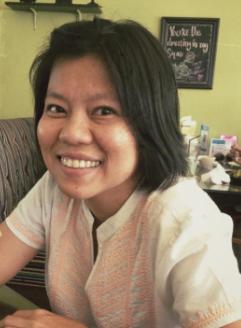
Pradhana ChantaruphanReceived a Sylff Fellowship in 2013 at Chiang Mai University, Thailand, while conducting her PhD studies in anthropology. She is a lecturer in the Department of Anthropology, Faculty of Archeology, at Silpakorn University in Bangkok.
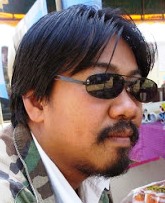
Olarn OnglaReceived a Sylff Fellowship in 2013.Completed a master’s degree in Political Science at the Faculty of Political Science and Public Administration, Chiang Mai University.
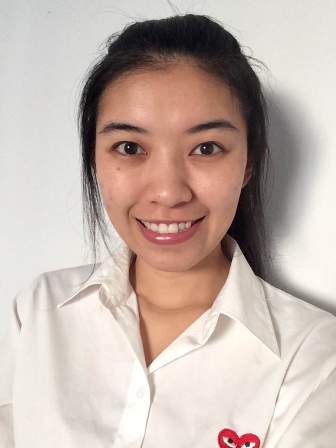
Sasiwimon WorapanReceived a Sylff Fellowship in 2013. A master’s student in the economics program at Chiang Mai University, Thailand. Areas of interest include business economics, international economics, and the uses of economic theory and quantitative methods to analyze problems. Her thesis is titled “Impact of Remittances on Economic Growth in ASEAN Countries.”
